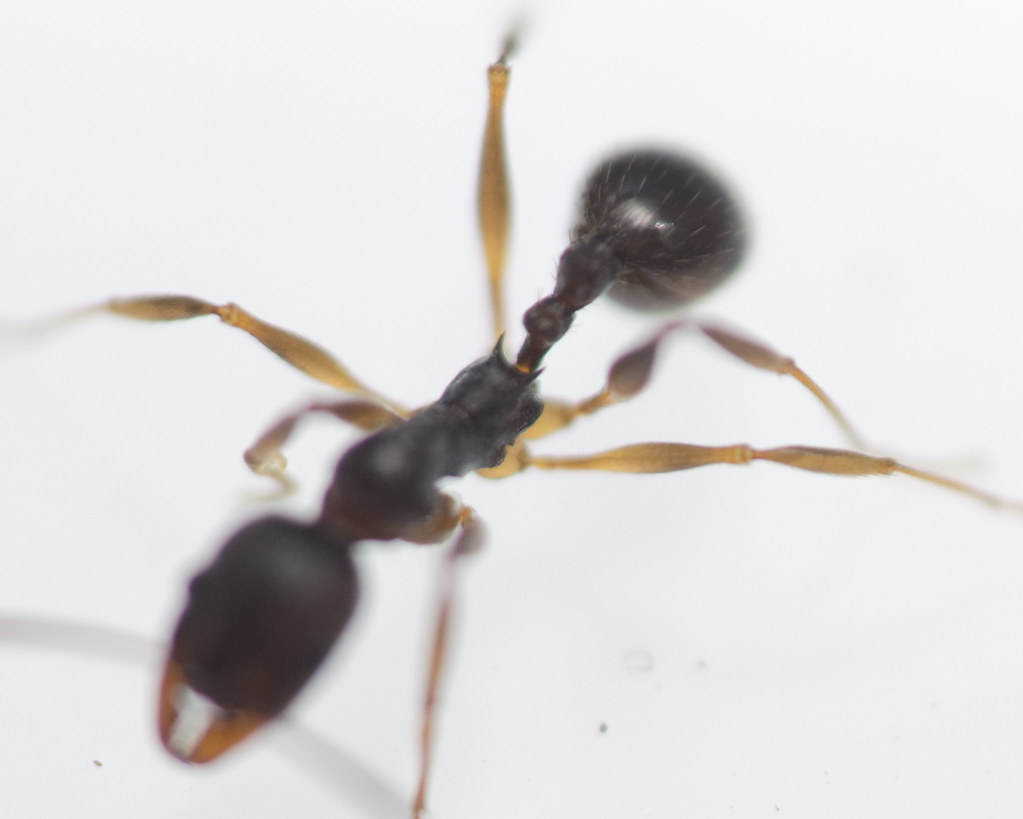Hello All,
Collected this ant yesterday. Is this Aphaenogaster rudis? Size is 3-4mm roughly. Found in forestested habitat along a river. The colony was found under a stone. Still new to trying to ID my local species would appreciate any help!




Hello All,
Collected this ant yesterday. Is this Aphaenogaster rudis? Size is 3-4mm roughly. Found in forestested habitat along a river. The colony was found under a stone. Still new to trying to ID my local species would appreciate any help!



This is either rudis or picea. I don't know how to distinguish them, though these pictures are probably sufficient, as they are very good.
Hi there! I went on a 6 month or so hiatus, in part due, and in part cause of the death of my colonies.
However, I went back to the Sierras, and restarted my collection, which is now as follows:
Aphaenogaster uinta, Camponotus vicinus, Camponotus modoc, Formica cf. aserva, Formica cf. micropthalma, Formica cf. manni, Formica subpolita, Formica cf. subaenescens, Lasius americanus, Manica invidia, Pogonomyrmex salinus, Pogonomyrmex sp. 1, Solenopsis validiuscula, & Solenopsis sp. 3 (new Sierra variant).
From what my book is telling me you can tell the difference between them by the following:
color of last four antennal segments (picea is lighter/rudis same color)
mesanotal peak raised over pronotum/not raised (picea raised)
and which direction the propedal spines point (upward=rudis/rearward=picea)
I think it is rudis but I am really still learning and its hard to tell some factors with how the ant is posing in photos.Also photographing this ant was a real pain in the butt!
So some of the colors in these photos may not be accurate.
At first I thought it was Myrmica. Seems they are rather similar with the 2 segmented pedicil!
Edited by Technomyrmex, March 21 2020 - 2:11 PM.
Yeah, if the color of the antennae is absolute, then it is certainly rudis.
Hi there! I went on a 6 month or so hiatus, in part due, and in part cause of the death of my colonies.
However, I went back to the Sierras, and restarted my collection, which is now as follows:
Aphaenogaster uinta, Camponotus vicinus, Camponotus modoc, Formica cf. aserva, Formica cf. micropthalma, Formica cf. manni, Formica subpolita, Formica cf. subaenescens, Lasius americanus, Manica invidia, Pogonomyrmex salinus, Pogonomyrmex sp. 1, Solenopsis validiuscula, & Solenopsis sp. 3 (new Sierra variant).
My Main Journal | My Neivamyrmex Journal | My Ant Adoption | My YouTube
Join the TennesseeAnts Discord Server! https://discord.gg/JbKwPgs
Yeah, if the color of the antennae is absolute, then it is certainly rudis.
Unfortunately I do not have this ant anymore but I will go back to collection site and grab another worker or two to check again!
Aphaenogaster rudis
0 members, 1 guests, 0 anonymous users